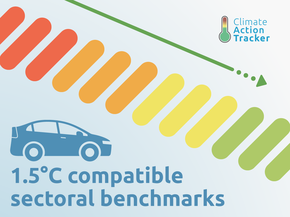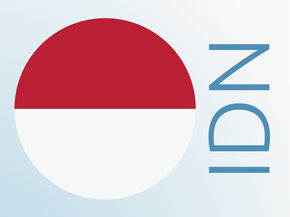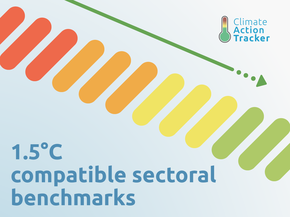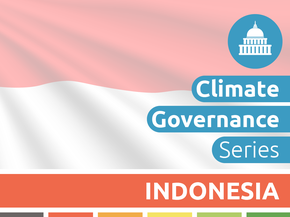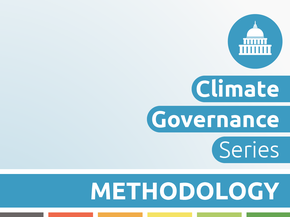Assumptions
Global Warming Potentials
The CAT uses Global Warming Potential (GWP) values from the IPCC’s Fourth Assessment Report (AR4) for all its figures and time series. Assessments completed prior to December 2018 (COP24) used GWP values from the Second Assessment Report (SAR).
Historical emissions
We use the historical data provided by the Second Biennial Update Report (BUR) for the period 2000-2016 and data reported to the UNFCCC in the Greenhouse gas inventory database for the period before 2000. There is a discrepancy between these two sources for the year 2000 of about 50 MtCO2e; we have made no attempt to harmonise these data sources.
Pledges and targets
To quantify the 2030 NDC target we use the BAU and the sectoral distribution from Indonesia’s NDC document – taken at face value and without harmonisation to historical data (Republic of Indonesia, 2016).
The CAT takes the absolute emissions level excluding LULUCF by 2030 given in the official documents for the unconditional targets. Due to the lack of clarity in the conditional target, the CAT uses a range to determine the target absolute emissions level. The upper range is defined as the sum of sectoral emissions, excluding LULUCF, presented in the NDC table – which leads to a 38% emissions reduction below BAU. This has an implicit assumption that the LULUCF sector is responsible for the further emissions reductions needed to reach the 41% target. The lower range assumes that the remaining emissions reduction comes from non-LULUCF sectors, which would demand higher emissions reductions in these sectors.
The NDC does not provide an absolute emissions level for the 2020 target. To quantify the 2020 pledge, the CAT assumes the sectoral contribution to emissions reduction from Indonesia’s Second Biennial Update Report, which implicitly assumes that the 2020 pledge and the NDC targets are based on the same BAU. The Second BUR shows that the LULUCF sector is responsible for around 80% of the emissions reduction in 2020.
Current policy projections
We construct the range of current policy projections based on different assumptions of what might happen to the coal-heavy power sector in Indonesia in the future. The scenarios are based on the reference “Business-as-usual” scenario from the Asia Pacific Energy Research Centre (APERC), which "assumes current policies and trends continue" (Asia Pacific Energy Research Centre, 2016), and on Indonesia’s 10-year electricity supply plan RUPTL 2019 – 2028 (Republic of Indonesia, 2019). According to APERC, the share of coal in power generation will increase from 51% in 2013 to 58% in 2020, 59% in 2025 and 60% in 2030. The APERC scenario is developed by an independent organisation and is used as an alternative development pathway since it is based on its own GDP and energy demand projections. The implementation of the RUPTL leads to 66% in 2020, 55% in 2025 and 54% in 2028. Using emission factors from the IEA’s Current Policies Scenario for non-OECD Asia, multiplied by the time series of coal, oil, and gas for both TPES and electricity related emissions according to the APERC reference scenario, gives the lower bound of emissions in our Current Policy Scenario for the energy sector, representing continued use of coal. Note that the APERC reference scenario is consistent with increasing installed capacity of coal by 25 GW between 2013 and 2025, so in the same order of magnitude as the RUPTL 2019 – 2028.
Total electricity demand forecast by the RUPTL is higher than that in the APERC reference scenario, however the projected electricity generation has substantially decreased in comparison to previous years. It is to be noted that in our current policy scenario, the target of 23% renewables in TPES is not reached.
We subsequently add non-energy and non-CO2 emission projections from the second Biennial Update Report and harmonise the resulting time series with energy-CO2 projections. The emissions levels are sensitive to the method of harmonisation. Thus, we apply two methods:
- Apply growth rates of the calculated scenarios to the last historical year
- Adjust all future years by the difference of the calculated scenario and the inventory in the last available year (2016).
Both methods are included in the range presented for current policy projections.
Planned policy: Renewable energy and biofuels target
Our planned policy scenario assumes that Indonesia will achieve its renewable energy and biofuels targets target shares in primary energy supply by 2025, as per the National Energy Policy (including 23% RE excl. traditional biomass), and the achievement of a 30% blending of biofuels in transport and industry by 2020 (assuming that this reduces the demand for other liquid fuels)(ICCT, 2016)—is constructed using the APERC projections of total supply and demand as a baseline and adapting the relevant shares of renewables and biofuels in the future.
It is assumed here that the share of renewables in TPES will develop linearly from 2025 and 2050 between the targets for those years; it is assumed that the biofuel blending mandate stays at its 2020 level for 2030. The upper bound of this scenario assumes that the biofuel blending mandate overlaps completely with the goal of reaching 23% RE in TPES and that the share of traditional biofuels in TPES would decrease with the same rate as that projected for all biofuels in Indonesia in (OECD/IEA & IEA, 2016) the lower bound is based on the assumption that these targets are completely additional to one another. We assume biofuels share increase would displace oil consumption and reduce emissions by 37% compared to oil to incorporate emissions additions due to land use change and other lifecycle considerations (DeCicco et al., 2016).
This scenario is shown additionally to the range of current policy scenarios and the pledges based on the NDC’s BAU. Despite the continuing importance of coal in this scenario, it does result in substantially lower emissions than the current policy scenario range and would lead to Indonesia overachieving its conditional 2030 NDC target.
Further analysis
Country-related publications
Stay informed
Subscribe to our newsletter

